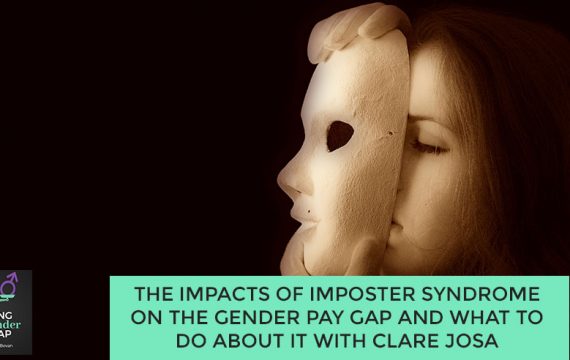Too often, we question the impact a leadership coach can make. Is it practical, when do you need one, and will it be worth the investment? In this episode, host Sherry Bevan shares tips and important points to consider when selecting a leadership coach. Choosing the right coach can contribute to achieving your goal as a company, team, or individual. Tune in and discover how leadership coaching can work for you.
—
Listen to the podcast here
Narrowing The Gender Pay Gap Through Leadership Coaching
In this episode, I’m going to share with you how leadership coaching can help strengthen your female talent pipeline and close your gender pay gap. In my years of working in technology and ten years, in particular, specializing working as a leadership coach in the technology sector, I have absolutely seen the transformative power that leadership coaching can have on individuals, teams, and whole companies. What I want to share with you is how it works, when it might be a good time to consider using a leadership coach, when it’s most effective, and what the benefits of coaching are.
How Does Coaching Work?
We’ll spend a little bit of time thinking about the pros and cons of whether or not you use an internal versus an external coach. If you are going to go external or even look at somebody internally, what to look for in that coach. I will talk a little bit about the coaching process and what else you might want to consider running alongside coaching. First, let’s think about how coaching work. What’s the point of leadership coaching? How is it going to help you strengthen your female talent pipeline, and in the long-term, how is it going to help you close your gender pay gap?
When you are working with a coach, there are a few real positives that individuals will get from the coaching process. For a start, it helps to build self-awareness and awareness of your strengths and your skills. Also, opportunities for improvement – where you have knowledge gaps and where you have confidence gaps so that you can then decide whether or not you want to fill those gaps depending on the progress that you are looking for in your career.
Building that self-awareness and getting crystal clear on your skills and your strengths so that in itself gives that individual more courage and confidence. Therefore, they will be more likely to take that next step in their career. Coaching works because of that strengthening of your self-awareness that will enable an individual to have that courage, to have that confidence, to increase their visibility so they make a bigger impact.
That means that they are able to improve and strengthen stakeholder relationships that they might have so they get more visible in the workplace. Therefore, they are more likely to be front of mind when it comes to considering candidates for new opportunities, promotion, or getting involved in other activities.
It’s that self-awareness and that recognition of your own strengths and talents that give individuals the courage to take more risks. More risks often result in more creative and innovative thinking, which can help that individual to make a bigger impact. At the end of the day, if they are coming up with more creative and innovative thinking, that can be a real benefit for your organization.
Coaching often starts with small changes, then gradually, over time, moves up to making bigger changes.
Often, when somebody is going through leadership coaching, they are more willing and open to look beyond their immediate team and their company for fresh ideas and perspectives. It can be valuable when you are looking to develop new lines or to strengthen the relationships you have with your clients.
It’s that courage to take more risks that allows them to make braver decisions. Perhaps decisions, they might be feeling a little bit tentative about making and a little bit hesitant, but having that confidence once they start to see what else they can do. Often with coaching, it starts off with small changes and then gradually, over time, moves up to taking bigger changes, which at the start might have been too big a step to take.
As time goes on and the coach will work with the individual to build their confidence and courage so that they feel they can take those brave decisions three months into a coaching relationship. Those decisions might not feel as big, scary, or as daunting because, over time, they have developed that confidence and courage in themselves.
It’s that better decision-making that will help to develop their leadership skills and confidence. The one thing that I would also point out with leadership coaching and I have seen this on occasion. When you take on a coach, whether you bring that person in from externally or you match somebody up to work with an internal coach, sometimes it might lead to decisions that you weren’t expecting.
I have seen it where somebody has gone through leadership coaching, looked at their strengths and values, how that was in alignment or not with the company’s values, and decided they don’t want to stay with the company anymore. It can lead to people leaving. That is the caveat that the more you are giving that individual, the more confidence, increasing their visibility, encouraging them to think differently and creatively, and have the courage to take more risks. One of those risks might be to leave.
When Is A Good Time To Use A Coach?
When is a good time to use a coach? Often, I see that people will bring coaching in when there’s a particular change of experience. For example, if somebody is being promoted into a new role, they are taking on new responsibilities, or they are taking the same role, but in a different department, that often can be a good time to focus on getting that person settled into their new role and hitting the ground running.

That’s one time when you might feel it’s appropriate to bring in a coach. Another time that often sees if you are making a company-wide change management program. Perhaps you’ve gone through a restructuring, developing new service lines, or targeting a new sector. That often is a good time to bring in a coach to help and support your leaders, start to think in a different way, think more creatively, and foster that innovative thinking. That’s another opportunity for you to bring in coaching.
Another time that I often see companies bring in a leadership coach is for people who are coming back from maternity leave to help them get settled back into their roles. Often if they have taken nine months or a year out, or they have taken shared parental leave, a lot can change in an organization in that time.
Sometimes, coming back from maternity leave, you have left one job and you’ve come back, and the role has changed or maybe they have changed department or the structure of their team has changed. Having that coaching on that return can be valuable to rebuild that person’s confidence and leadership skills. Help them redevelop or create new stakeholder relationships. Coming back from maternity leave or some other long-term absence, perhaps if the person has taken long-term sickness, for example, or had to take time out for caring responsibilities.
When Is Coaching Most Effective?
Coaching itself is most effective if the individual who is being coached has a willingness and an open mind to the change and embraces new patterns of behavior. It helps if they can be humble about what they do know and what they don’t know, somebody who is curious to explore new perspectives. Coaching can be effective when somebody is willing, able, and ready to recognize and accept their strengths, challenges, and blind spots, and if they are willing to learn more about themselves. That’s when coaching can be powerful.
It’s that curiosity to explore new perspectives and to be open to new ideas and possibilities. Some of which may come from simply having that time and space to articulate their thoughts and ambitions. Some of that may come with being willing to explore further outside of the organization and get that fresh perspective and ideas from outside or in date, ideas from the coach themselves.
We know that coaching works. From your point of view and the company’s point of view, it means that more women are more likely to put themselves forward for promotion or more likely to apply for new roles, so you get more women in those leadership positions. That becomes a self-perpetuating cycle, doesn’t it? We all have heard that thing that you can’t be what you can’t see. The more women you do have in those more senior roles, the more likely it is that other women in your organization, perhaps junior talent or your future talent, will see that that is possible. That is something that I can aspire to, and at the end of the day, that is what is going to start to close your gender pay gap.
Coaching can be effective when somebody is willing, able, and ready to recognize and accept their strengths, challenges, and blind spots.
The Power And Value Of Coaching
Coaching is powerful. It’s so valuable. It develops a person in the workplace, but it also develops that individual outside of work as well. That in itself is not perhaps necessarily going to benefit you as an employer. What it does do is increase, strengthen, and build employee engagement. That, in turn, is going to help you to build a strong employer brand and an employer brand that’s going to attract the best of the female talent that is out in the market.
By strengthening your female talent pipeline, it’s going to help you to increase retention. It is reducing attrition, which means you will save money because you will no longer be going to have to go through the recruitment process on such a regular basis. It’s also going to get the absolute best out of those individuals that you put on a coaching path because it means they are going to be able to maximize their performance and productivity. It helps them to develop their leadership skills so that the team as a whole, not just that individual, will be able to increase their performance and productivity.
Working With An Internal Coach Versus An External Coach
Often, when I’m working with clients, they might not be sure at first whether or not they want to use an internal coach or an external coach. Let me take a couple of moments to think about, explore, and ask you some questions about which do you think is going to be the most valuable. When you are working with an internal coach, one of the big benefits of that is the person already knows the organization. They truly understand the culture and the values. They will understand the unspoken rules, if you like, of the organization.
That in itself can be a limiting factor because it also means they might not be as open to new ideas. They are less likely to question or challenge something that the coachee, the person being coached, an idea that they come up with because it fits into the company’s existing culture and values. From the coachee’s perspective, they might wonder whether or not that individual has an ulterior motive or a hidden agenda for being their coach.
That’s unlikely to be a conscious thing, but it might stymie or hamper conversation so much because if you are working with somebody and you are worried about whether or not what I say is going to get back to my manager or to my manager’s manager, it might mean that conversation is not as open and honest as it could be if you are working with an external coach.
There’s that potentially slight niggle of the back of the mind around confidentiality. If you go to an external coach, for example, so somebody like myself, where I come in and work with individuals in your organization or with a team of people in your organization, obviously, there are going to be some advantages in that.

I am completely independent. As far as I’m concerned, I have no hidden agenda. I don’t have a reason for wanting that person to take on a particular role or for that person to want to be more assertive or less challenging. I don’t have a reason for wanting that person to change their behavior so I can be completely independent.
Confidentiality is something absolutely that you can rely and depend upon, as can the coachee themselves. That does mean it can change the nuance of the conversation because coaching is about creating that safe, protected space for the individual to articulate their thoughts, beliefs, and feelings. If they know that it is absolutely confidential and isn’t going to pass outside of the room, they are more likely to relax and open up, which means in the coaching process, that transformation can be much deeper.
As an outsider, I bring in a fresh perspective, fresh ideas, and different ways of thinking, and that can be helpful. Particularly, if you want the person to take on coaching because you want them to be more creative and innovative in the way that they develop their team or the way that you develop your services or work with your clients.
As I’m not so familiar with your culture and values, I don’t know what the expected behavior is. I’m more likely to help the coachee question. I’m more likely to challenge the coachee if they say, “We can’t do it like that.” I’m more determined to say, “Why not? I have seen it done like that in other organizations.”
There is an advantage of bringing somebody in from outside. It can change the whole feeling around the coaching. There’s that confidentiality. It’s that fresh perspective, but on the other hand, I’m not going to know the company culture and values, or understand the intricacies of the organization and how your matrix management works, for example. However, as a coach, I would always argue. I don’t need to know that detail because I’m not coaching you about your organization. I’m coaching you about your strengths, skills, values and leadership skills, helping the individual to make decisions on how to improve their performance at work.
Having thought about the pros and cons of working with an internal coach versus an external coach, the next thing to think about is what you look for in a coach. That professionalism, integrity, and confidentiality for me are absolutely key. I would always encourage you to work with somebody that you feel you can trust.
One key skill when working in a coaching relationship is the ability to hear and recognize what’s not being said.
When you have that coaching relationship, it can be quite a powerful relationship between the coach and the coachee. Most definitely, it needs to be a good sense of rapport between the coachee and the coach. I wouldn’t necessarily recommend that if you are looking to bring leadership coaching for your female talent, I might not be the right person to work with every single one of your female leaders, but I will be the right person to work with some of your female leaders.
Making The Relationship Work
There’ll be other coaches with who the relationship will be better suited for different people. One of the key things in a coaching relationship is the actual relationship like, “How is this going to work? Do you trust me? Do you have confidence in me? Do you feel that you can be open and honest when you are working with me?”
The other thing I would say when you are looking at coaches is making sure that you are finding somebody who’s got experience in coaching. It’s very difficult to be completely transparent about the people that I have worked with because often, the confidentiality follows through after the coaching relationship has finished. I couldn’t necessarily tell everybody I have worked with because not everybody is willing to share that information. Knowing that I have got that experience and worked with companies in your sector is a real bonus when it comes to selecting the right coach.
Having worked in technology all my life, having been a woman or a female leader in technology, I completely understand and empathize with the challenges that a woman brings. Also, the opportunities. I have seen how that works in lots of different organizations. I’m bringing that experience with me to the table.
The coaching process itself, let me spend a couple of moments thinking about that. One of the key things with the coaching processes is to create a safe space for the participant so that they have the confidence, the safety, and the openness if you like to be able to express their inner thoughts, beliefs, and feelings, the more that you can articulate those thoughts. For example, I have been working with somebody who, at the back of her mind, niggle about her future career prospects at her current employer.
Together, we have formulated a plan so that she can go and talk to her manager about that. That is going to free up her mind so that she can then focus and concentrate on other aspects of her work in a more authentic way. It’s about creating that safe space so that you can articulate those thoughts, beliefs, and feelings that might be nibbling away at the back of your head, and you can’t quite put your finger on why you are not happy or why this feels in conflict. It’s that safe space that is powerful and important.

What does a coach do when they are coaching? This sounds so simple. It’s crazy that people pay me to do this, but basically, the crux of it is I sit, I listen, and I ask questions. I will ask open questions, but at times I will challenge and reflect back on what I’m hearing. One of the key skills when you are working in a coaching relationship, if you are the coach, is the ability to hear and recognize what’s not being said.
That is so important because when you are working with somebody inside the organization and you are having a conversation at lunchtime. Perhaps you are stuck on a problem, or you are wondering how to tackle a particular challenge. Talk to somebody else in the organization. We all inevitably fall into the same way of thinking, in particular, company culture. You might not get that different perspective. You might not get the person questioning or challenging you. What’s making you think about doing that, or what else could you do?
It’s simple as it sounds, but it’s very powerful. Coaches listen but they also ask questions. They reflect, they challenge, but also, they hear what’s not being said. One of the fundamental parts of the whole coaching process is that the coach will always ask the client to make a commitment and be very specific about the actions that they are going to undertake before that next coaching session.
Personally, as a coach, I will always ask the person to write down the action and say it out loud to me. What I do at the end of the session is ask that person to read out what they have said. I record it as well so that when we come back at the next session, I can say, “How did you get on with X?” If they didn’t get on with X for whatever reason, “What got in the way? What can we do about that? How can we stop that blockage from happening next time?”
Coaching can be a powerful process. It sounds super simple and I talk about it in those terms, but it’s a powerful tool to develop the leadership skills in your female talent and strengthen your female talent pipeline. At the end of the day, you are going to increase retention, reduce attrition, and close that gender pay gap.
Thank you so much for joining me. I hope you found it useful to hear about how leadership coaching can work and how it can help you to close your gender pay gap. More episodes on closing the gender pay gap at SherryBevan.co.uk. If this has sparked an idea for you and your organization, or if you have been thinking about bringing in some leadership coaches, please do book an exploratory chat with me.
That will give you the opportunity to ask any questions you have about the leadership coaching that I do, either individual or team level. A variety of levels, from your future leadership candidates to heads of departments or directors. I do that coaching right now with a range of cybersecurity and technology companies to support them in staunching the female talent pipeline. If that’s of interest, please do get in touch with me by email, Sherry@SherryBevan.co.uk, to book your call. Thank you for reading. I will be back next time.





 Clare Josa is the UK’s leading authority on Imposter Syndrome, the author of eight books, and an expert in the neuroscience and psychology of performance.
Clare Josa is the UK’s leading authority on Imposter Syndrome, the author of eight books, and an expert in the neuroscience and psychology of performance.